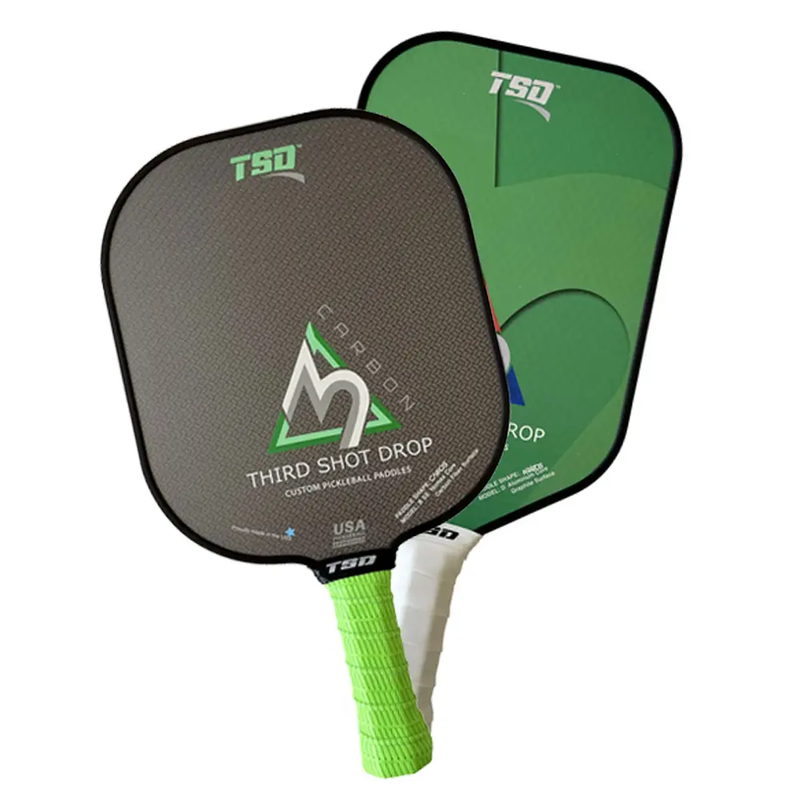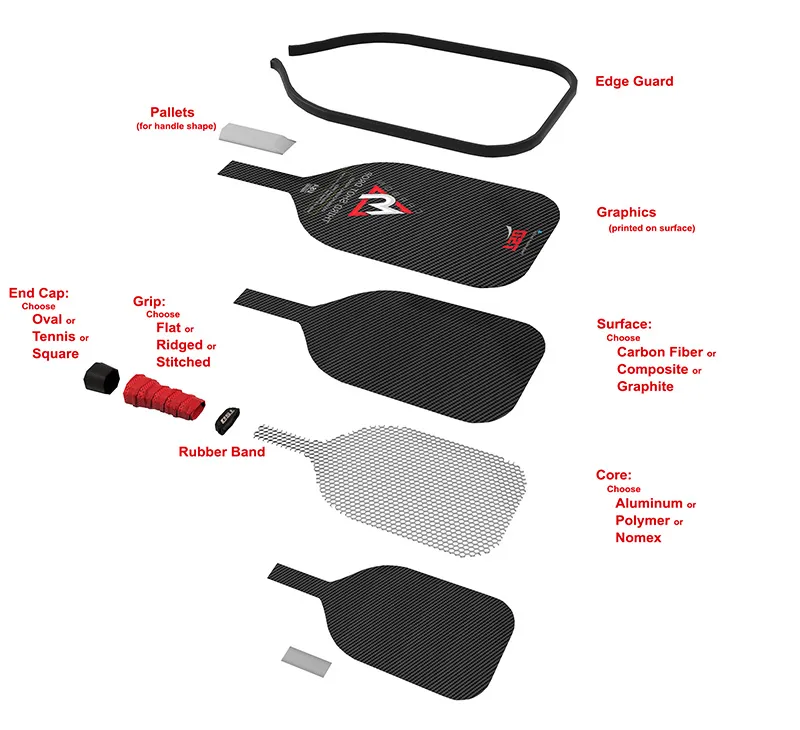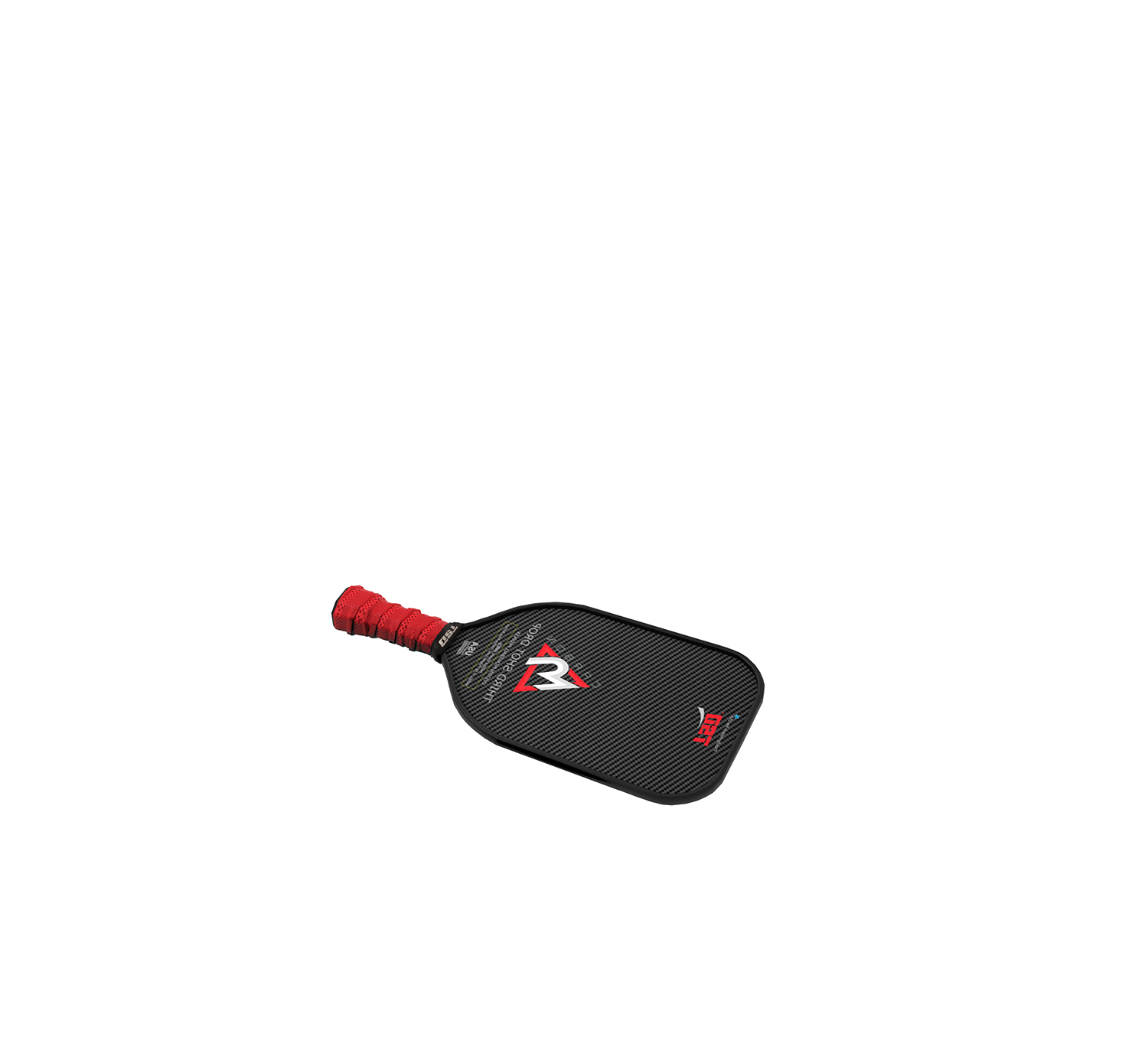
Finding the right paddle for you isn’t about what Bob or Sally plays with or which colors look best. It’s about building the right tool for the job. Players that understand their game and are educated in the playing characteristics of the materials that make their paddle and cause it to play a certain way, are better equipped to perform to the best of their abilities. Knowing about cores, surfaces, weights and handles/grips will enable you to build the paddle that will elevate your game. When you have confidence in your equipment, that translates into performance on the court!


Currently, we offer three different types of cores: Aluminum, Nomex and Polymer. Each one has playing characteristics that suit certain styles of play.
Aluminum core paddles feature advanced, lighter weight, aluminum honeycomb cores. Aluminum cores are known for their outstanding “TOUCH”. The ball comes off just a bit slower, which gives players an extra edge of maneuverability and control. This extra amount of control is due to both the soft rebound and the lightweight nature of aluminum. Players may prefer this core for their third shot drops and touch shots. However, aluminum cores do dent over time (more so with the “rubbery balls”), so are not recommended for super hard hitters. You will lose a bit of power with aluminum cores.
Polymer core paddles are the most popular core currently used in pickleball paddles. The honeycomb polymer core provides power performance, yet gives soft control for the touch shots. Polymer cores have earned the reputation of being the quietest core on the market due to being slightly less deflective than the other two cores. The reduced deflection offers players a split-second longer to manipulate the ball, hence offering control.
Nomex core paddles feature a lightweight Nomex honeycomb core that has been used in a variety of sporting and high-tech industry applications. Nomex was the first core used in pickleball paddles and is still is a popular core material. Nomex honeycomb begins as a cardboard-like material which is then dipped in resin creating an extremely damage-resistant material. They are also the loudest of the three cores. Nomex cores are well-liked for their durability and consistency. Players looking for a lot of “POWER” prefer Nomex cores. You may lose a bit of pace control due to how quickly balls come (pop) off the Nomex core.
The three most commonly used surfaces for pickleball paddles are Carbon Fiber Weave, Graphite and Fiberglass Composite. Each has characteristics that, when combined with a core material, give each paddle the performance profile that suits every player’s unique style and game.
Carbon fiber surfaces are the most expensive, most durable and lightest weight. When bonded properly to a honeycomb core, Carbon Fiber weave (it is actually fabric before being bonded to a honeycomb core) is strong, durable, high tech and very distinctive in appearance. It provides the ultimate in ball control, but can lose a bit of power compared to the other surfaces.
Graphite paddle surfaces are very thin, about the thickness of a fingernail. Light and responsive, yet hard and strong. Players like the quick action off the Graphite face. Graphite is a bit heavier than carbon fiber and slightly less durable (and more cost effective, which is a reason many manufacturers use it rather than carbon fiber). Because of Graphite’s stiff nature, the ball does not sink into it, so it is easier to direct the ball, providing fantastic ball placement.
Composite paddle faces take full advantage of the latest aerospace composite material technology. Variations of composite surfaces are expanding throughout the industry, increasing their playability. These paddles feature an incredible combination of touch, feel, and strength. The Composite surface provides a bit more power than the other two surfaces.
Paddle weight is a hot button for players. Many believe that the weight determines how well they respond to the ball and should be based on their size and gender. That’s the opposite of what they need to think. Skill determines how well a player responds to the ball. Weight is more about what your body can cope with during play.
Very similar to baseball bats and tennis rackets, the player must first have the skill to aim, respond and direct the ball. The weight is what lets them do it comfortably and accurately. Heavier paddles help smooth out players’ shots, making them more consistent and repeatable. Lighter paddles can encourage too much herky-jerky movement and inconsistent hits. Simple physics, Force = Mass x Acceleration, dictates that the heavier the paddle, the more power a player has with less effort. The paddle is doing the work. Players with light paddles tend to incur more wrist, elbow and shoulder injuries.
Before a player decides that they must have a certain weight based on their size or gender, they should instead be sure that: 1) their grip is properly sized, and 2) the paddle weight matches their level of strength, regardless of their stature or gender. That combination is the most important factor in choosing a proper weight.
Also keep in mind how the weight